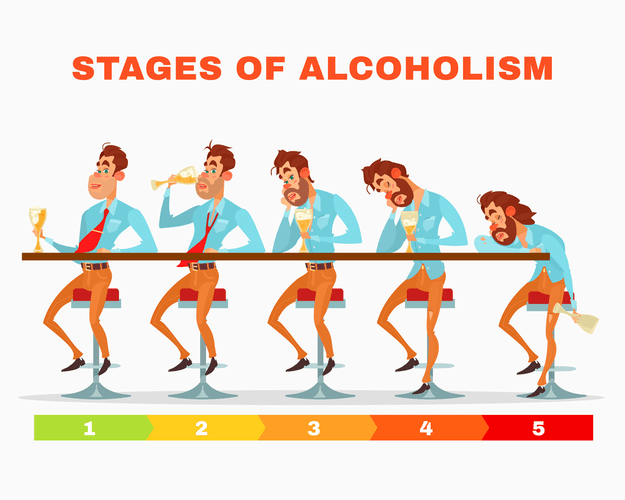Content
- What Can You Expect From a Sober Living Home?
- What Are the Differences between Halfway Houses and Other Sober-Living Houses?
- There is a paucity of research on the efficacy of addiction recovery housing—but here’s what we know so far
- The Process of Sober Living With Gateway Foundation
- FOLLOW US
- The Strengths of Sober Living Houses
You can live at a halfway home if you’re freshly sober, have gone through detox, are willing to stay sober, and can commit to following the house rules. California, however, is leading the way in regulating these facilities, so they do not discriminate, are not discriminated against, and maintain good health and safety standards for residents. Renting in a large city like Los Angeles will be more expensive than in smaller cities, but this is normal. When searching for a sober living home, look for places with rent costs that seem reasonable. It may be beneficial to ask a friend or family member to tour the facility and make sure it is worth the rent. States that regulate these facilities require a maximum number of residents, often fewer than 10.
If you are transitioning from a sober living to a halfway house after completing an IOP program, it’s best to talk to people who are familiar with halfway houses near you. Talking to others in the recovery community and the clinical program could save you time and trouble of weeding out what the best options are for yourself. Halfway houses are sometimes referred to as “sober living homes” without any of the sober living affiliations. Most halfway houses aren’t participating with a treatment center to house addicts while they’re in an IOP or OP level of care.
What Can You Expect From a Sober Living Home?
A man or woman in recovery with at least six months to one year of continuous sobriety may be an excellent choice for this position. As you determine what his or her salary will be, you may want to consider including free or reduced-price lodging and meals, as this is a common practice. The cost varies by the type of sober-living environment and length of stay.
Like other SLH models of recovery, residence are free to stay as long as they wish provide they comply with house rules (e.g., curfews, attendance at 12-step meetings) and fulfill their financial obligations. Also like other SLH models, each house has a house manager who is responsible for ensuring house rules and requirements are followed. ORS does not have any type of Residents Council, but house managers meet regularly https://huntingforrubies.com/tag/doctor-who.html with the executive director and have input into operation of the SLHs in during these contacts. Sober living homes are places where people in recovery can live for a while, typically after an inpatient treatment program. The hope is that with a period of extra support at a substance abuse halfway house or other sober living home, residents will learn the skills to be self-sufficient and maintain sobriety on their own.
What Are the Differences between Halfway Houses and Other Sober-Living Houses?
If you have already gone through rehab, but you’re not quite ready to live independently, this type of facility may be an excellent fit for you. In a recovery housing model, residents offer and receive support from their peers and leaders in their community. Research has discovered that communal living can help decrease substance abuse and incarceration rates, and increase employment rates. It can also help individuals hone their coping skills, learn how to communicate effectively, and trust themselves. When you’re seeking help while working on your sobriety, it’s crucial to know the difference between sober living and halfway houses so you can figure out which is best for you. Sober living homes offer safety and support for people who are recovering from drug or alcohol abuse.
- Halfway house residents must complete or have active enrollment in rehabilitation.
- They’re the most common type of sober living home in the United States.
- Engaging in sober hobbies helps you fill your time and distract yourself from drugs and alcohol, and it can also help you remain motivated and committed to your goal of sobriety.
- If you feel like staying in or aren’t ready to hit the streets, you can also do many sober activities and coping tools at home to fill your time.
- These homes are also known as transitional living or recovery residence programs.
Sober living homes may accept residents who are new to the rehab process, but most applicants have gone through a program before applying. This makes sense; residents must be able to stay sober in order to live the sober house. Recovering addicts who have sobriety under their belt and tools to stay clean are more likely to succeed in sober living.
There is a paucity of research on the efficacy of addiction recovery housing—but here’s what we know so far
We have been times when we had to tell a parent that they needed to let Junior grow up and stop calling the house. Sober living homes are usually male-only or female-only; rarely do they house both genders. By establishing this, you are setting the guidelines http://malchish.org/index.php?option=com_content&task=view&id=16&Itemid=35 for who can stay in your sober living home. In response, policymakers have attempted to create laws allowing states to regulate sober living homes. Your friends or family members may tempt you with alcohol or other drugs by consuming them in front of you.
This is an important step in recovery; addiction makes people irresponsible and the friends and families of addicts often enable them by supporting them despite these behaviors. Recovery home residents usually pay rent, buy their own food and do the same things they would do for themselves if they lived in a traditional apartment or home. However, they also have to submit to random drug testing, adhere to a curfew, and follow house rules. Since sober living typically follows addiction treatment, getting a referral from the treatment provider is recommended. Other referral sources may include the criminal justice system, a mental health professional, Twelve Step meeting participants, or friends and family. Whatever the source of the referral, take a tour of the facility and talk to the people living there to decide if it’s the right fit for you.
The Process of Sober Living With Gateway Foundation
Sober living environments also tend to be less strict than halfway houses, and residents of a sober living facility are allowed to come and go. Participants were interviewed within their first week of entering a sober living house and again at 6-, 12-, and 18-month follow up. To maximize generalization of findings, very few exclusion criteria were used and very few residents declined to participate. Primary outcomes consisted or self report measures of alcohol and drug use.




